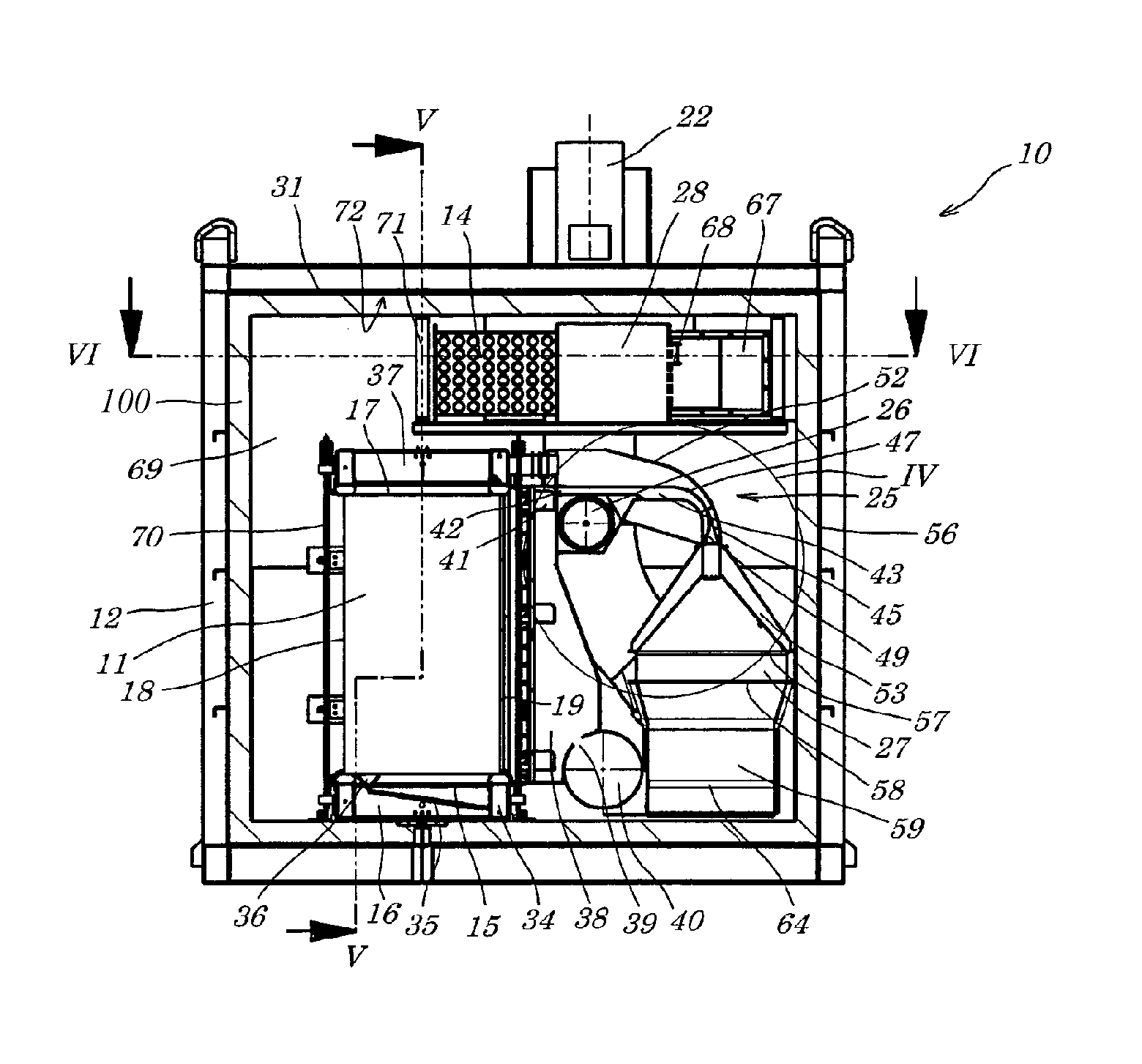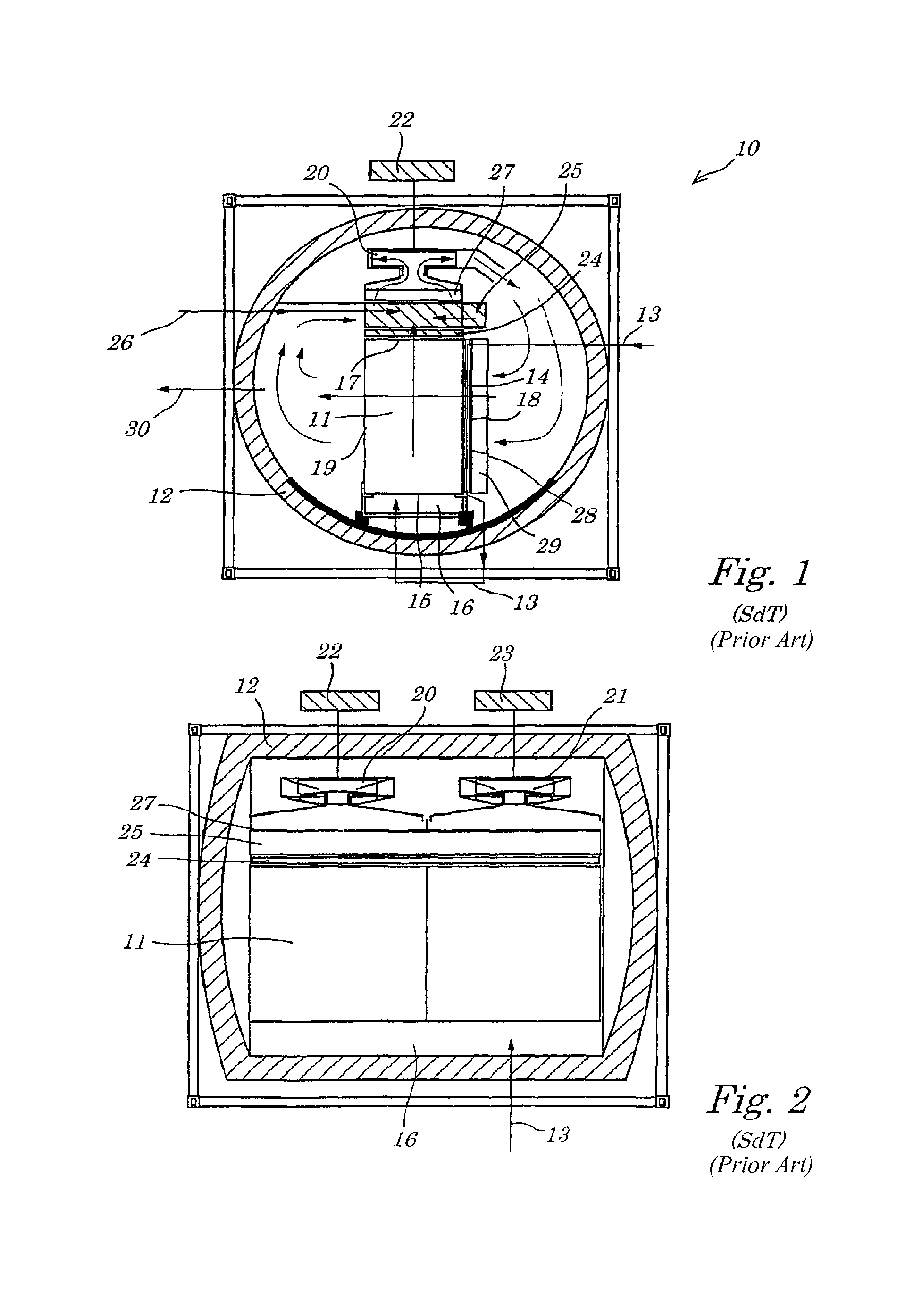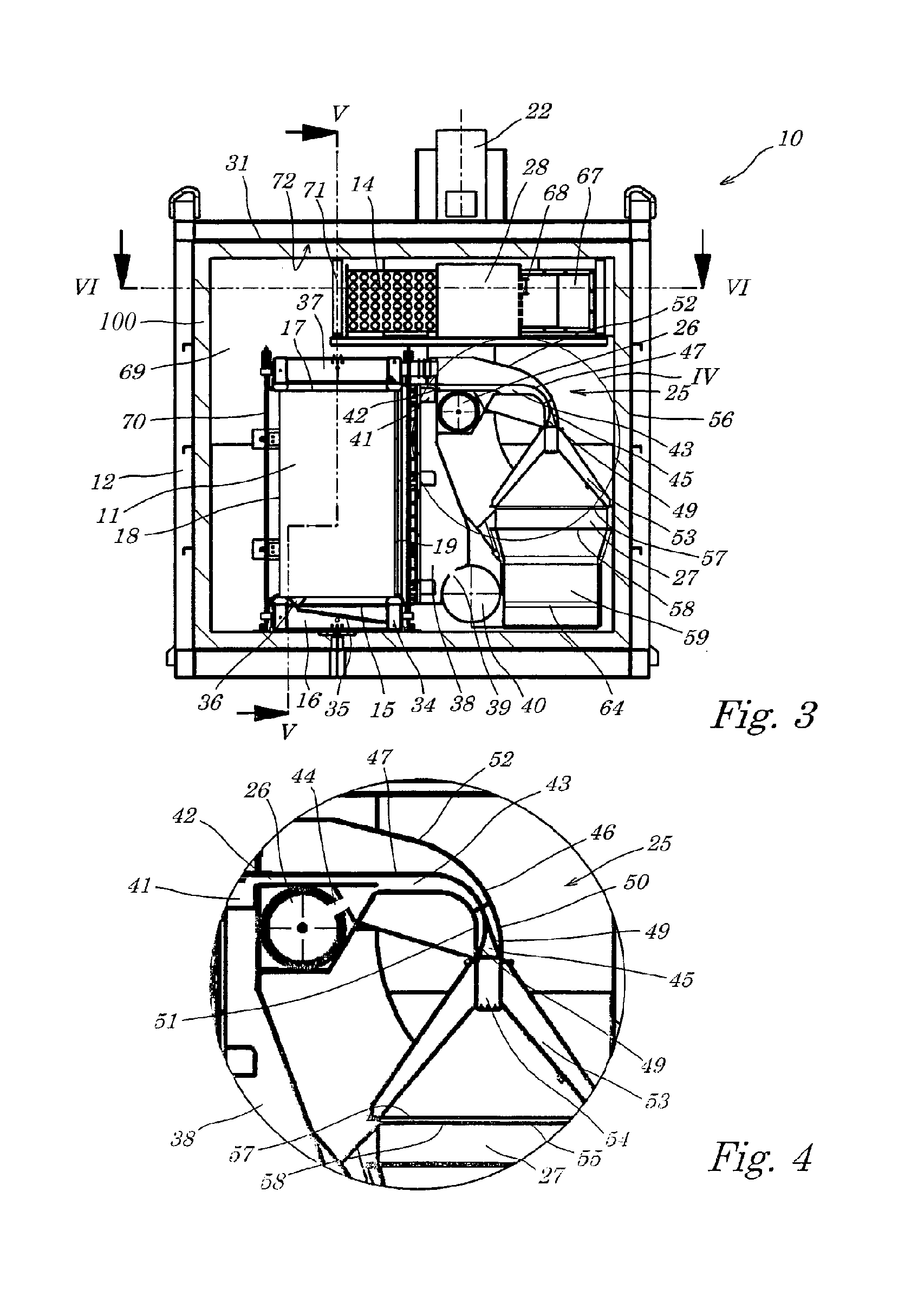Fuel cell assembly comprising an improved catalytic burner
a fuel cell and burner technology, applied in the direction of fuel cells, mixers, mixing methods, etc., to achieve the effect of reducing pressure losses, optimizing suction by fans, and uniform flow against the cell stack
- Summary
- Abstract
- Description
- Claims
- Application Information
AI Technical Summary
Benefits of technology
Problems solved by technology
Method used
Image
Examples
Embodiment Construction
[0035]The fuel cell according to the prior art was already described above in conjunction with FIGS. 1 and 2.
[0036]With reference to FIGS. 3 to 7 two preferred variants of the fuel cell arrangement according to the disclosure are described below. Components that are identical to components of the fuel cell arrangement of the prior art or have the same or similar function are then referred to with the same reference numbers.
[0037]The fuel cell arrangement designed overall with reference number 10, like the fuel cell arrangement of the prior art, has a horizontally lying fuel cell stack 11 consisting of vertically arranged plate-like elements, which is arranged in a heat-insulated, gas-tight protective housing 12. In contrast to the protective housing of the fuel cell arrangement of the prior art, the protective housing of the fuel arrangement 10 according to the disclosure is designed essentially rectangular. The gas-tight protective housing 12 consists of individual metal plates 31 ...
PUM
| Property | Measurement | Unit |
|---|---|---|
| temperatures | aaaaa | aaaaa |
| operating temperature | aaaaa | aaaaa |
| electrical power | aaaaa | aaaaa |
Abstract
Description
Claims
Application Information
 Login to View More
Login to View More - R&D
- Intellectual Property
- Life Sciences
- Materials
- Tech Scout
- Unparalleled Data Quality
- Higher Quality Content
- 60% Fewer Hallucinations
Browse by: Latest US Patents, China's latest patents, Technical Efficacy Thesaurus, Application Domain, Technology Topic, Popular Technical Reports.
© 2025 PatSnap. All rights reserved.Legal|Privacy policy|Modern Slavery Act Transparency Statement|Sitemap|About US| Contact US: help@patsnap.com



